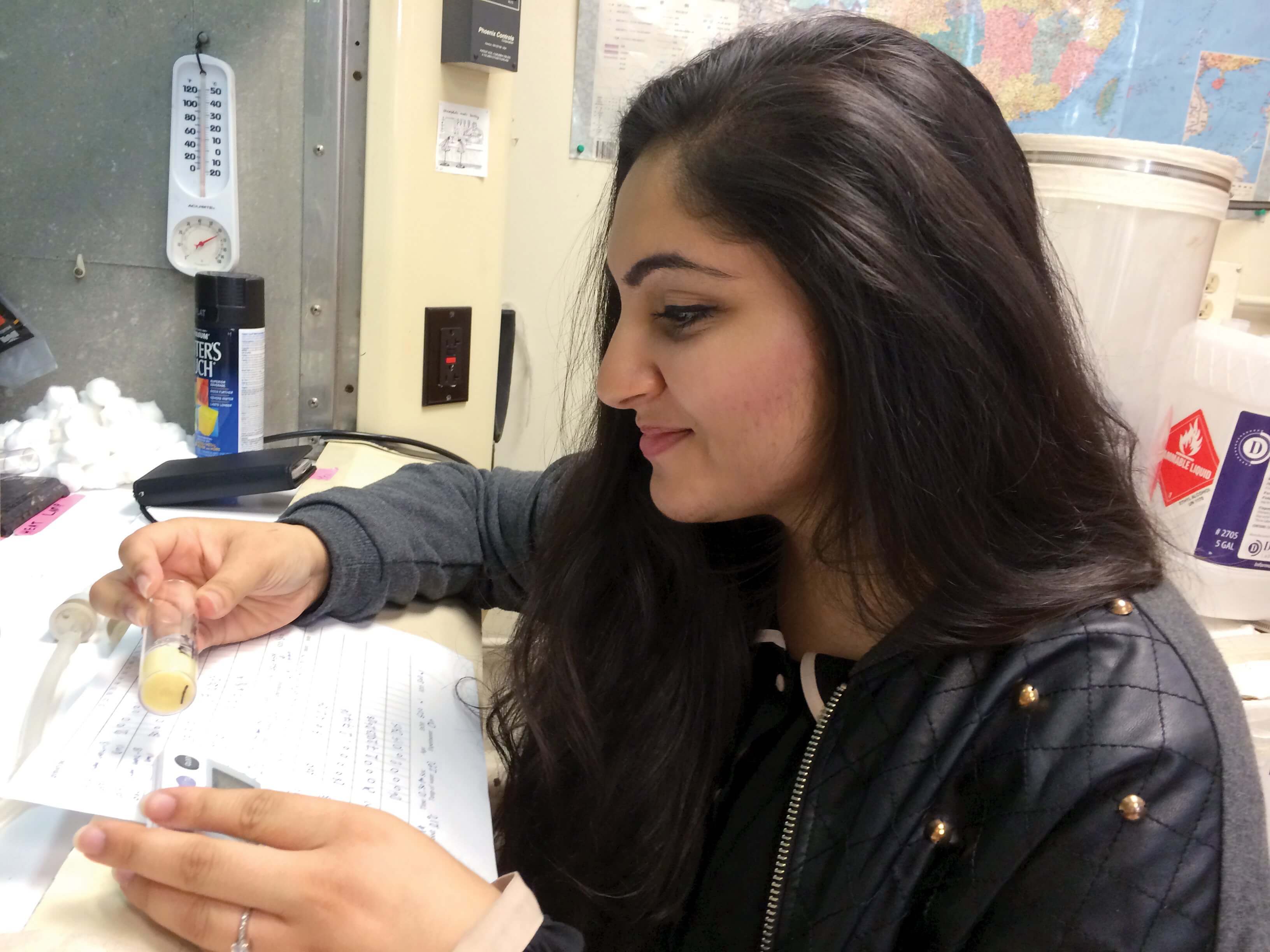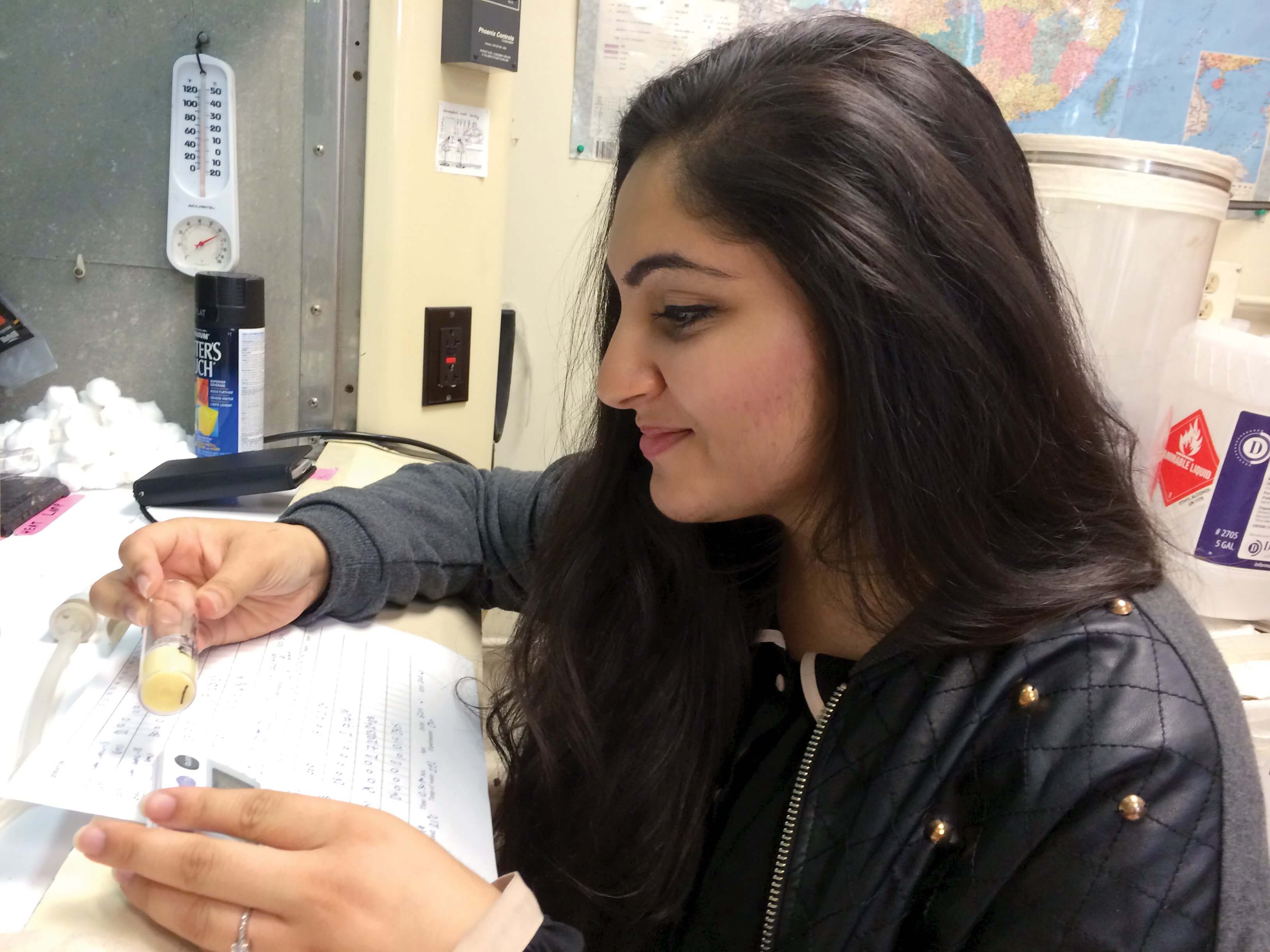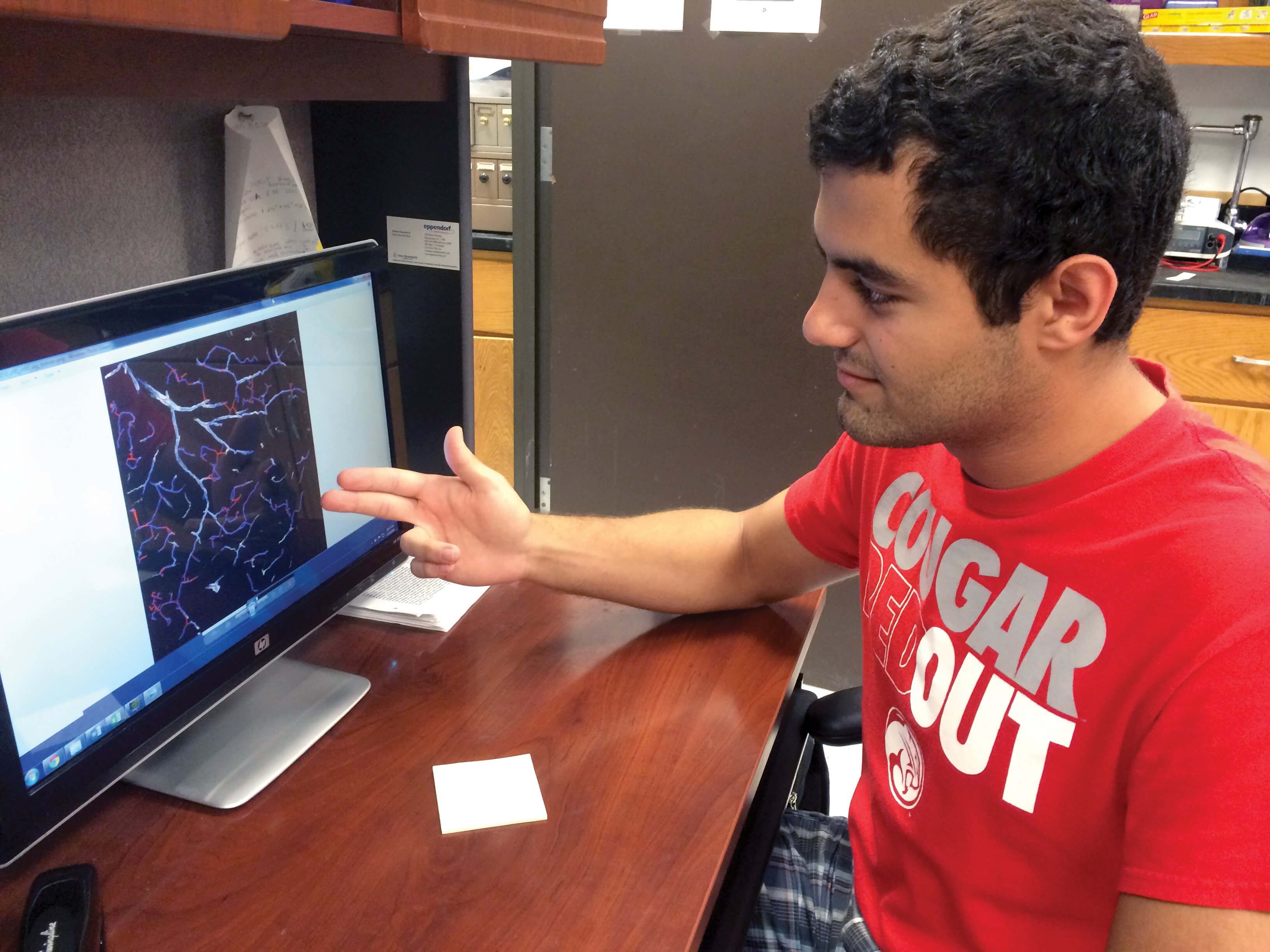Student Projects Include Turning Cancer to Fat, Drunk Fruit Flies

Seeking eventual solutions to problems ranging from alcoholism, cancer and Alzheimer’s to finding better ways to clean contact lenses and use Lego models to build bridges, University of Houston (UH) students devoted the summer to some serious scholarship.
Delving into a number of complex projects over the course of 10 weeks, 61 students across a variety of disciplines each received $3,500 stipends for an intensive, full-time research experience in the Summer Undergraduate Research Fellowship (SURF) program under the mentorship of UH faculty members.
“Cancer is something I have experienced through many family members and have seen in helpless children in the pediatric ward of hospitals I volunteered in,” said biomedical sciences sophomore Radhini Abeysekera. “When I saw the opportunity to work in a lab doing research on osteosarcoma, a cancer that usually targets children and teenagers, I was very interested to get a look behind the scenes.”
Working under the mentorship of professor Preethi Gunaratne in the Department of Biology and Biochemistry, Abeysekera is studying a specific type of RNA that may be able to control what a cell matures into, pos- sibly being able to convert cancer cells to fat cells, which are easier to eliminate than cancer.
In another project from the Department of Biology and Biochemistry, Khadeeja Tarique is studying under the direction of professor Gregg Roman as the recipient of an additional scholarship from the Biology of Behavior Institute.
“In the Roman lab, we are trying to understand how alcohol changes activity of the neurons within the brain to bring about tolerance and other behavioral changes that can result in alcohol abuse and addiction,” Tarique said. “We are studying the effect of alcohol on neural activity using fruit flies. Once we understand which proteins alcohol interacts with to bring about these changes, we can then use these proteins to develop drugs to interfere with this interaction, which may inhibit the formation of tolerance and help stop people from becoming addicted to alcohol.”
Another biology senior, Sina Rezaei, is working with College of Pharmacy professor Jason Eriksen, researching one of the lesser studied aspects of Alzheimer’s disease. He is working with Eriksen to analyze 3-D images of brain tissue using a com- puter program that will give them a better understanding of changes in the blood vessels of the brain, what these changes are and how they relate to other effects of Alzheimer’s.
“SURF has allowed me to spend much more time in the lab, which has made me more confident in my work,” Rezaei said. “Hopefully, this technology will pave the way for future studies to give us a more complete picture of how the brain is affected by Alzheimer’s, with the end goal of creating new treatments.”
Echoing Rezaei’s sentiments about the value of lab experience, senior biology and biotechnology double major Sara Elchehabi says, “working in the lab has given me the opportunity to exercise my problem-solving skills and develop a conceptual understanding of what I am studying in my classes.”
Embarking on what may be more immediately applicable research, Elchehabi is working under College of Optometry professor Alison McDermott on what may be an efficient alternative for cleaning contact lenses. She is analyzing whether the addition of a particular antimicrobial agent to contact lens solution may prevent the growth of a common bacteria known to grow on contacts.
“Contact lens wearers are especially susceptible to infections caused by bacteria,” Elchehabi said. “While solutions containing hydrogen peroxide are best at protecting the wearer from infection, they require a minimum soaking time and complicated preparation process. A solution that resists bacterial growth more effectively, could offer lens wearers the greater protection they desire without all the constraints of traditional contact lens maintenance.”
— Lisa Merkl, University of Houston





